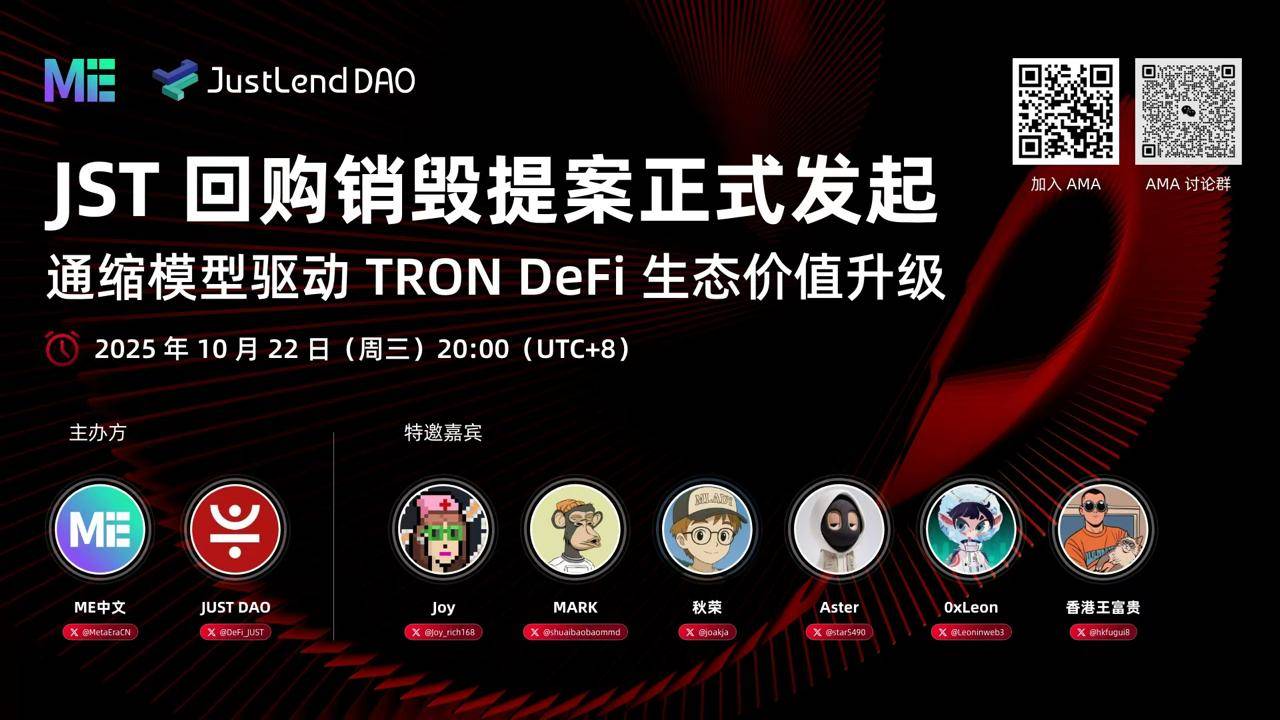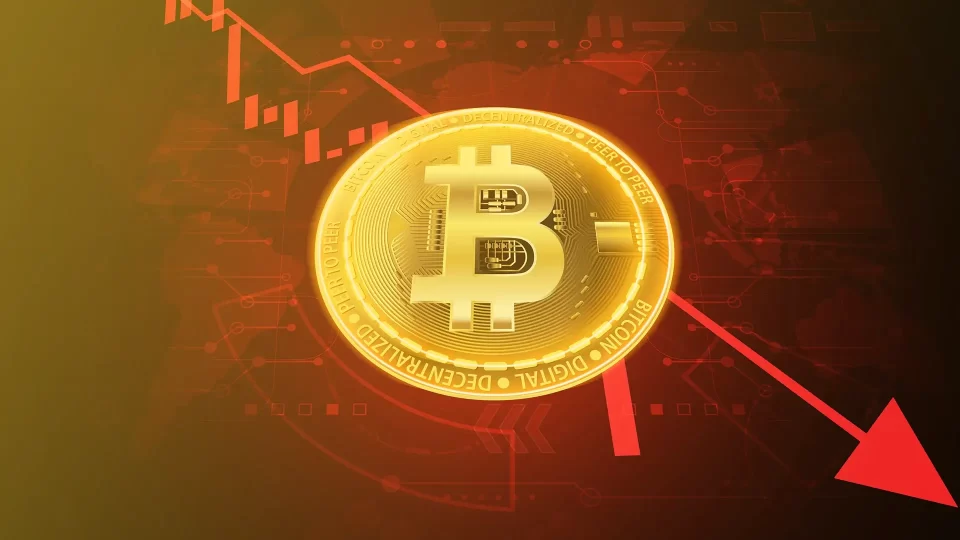Recently, the JustLend DAO governance community officially passed the JST buyback and burn mechanism proposal and completed the first large-scale JST buyback and burn. From now on, the net income of JustLend DAO and the USDD multi-chain ecosystem's earnings exceeding 10 million USD (excluding the first 10 million) will be used as planned for JST buyback and burn, executed transparently on-chain.
According to the latest burn announcement, JustLend DAO's accumulated earnings total 59,087,137 USDT, of which 30% (equivalent to 17,726,141 USDT) was used to buy back and burn 559,890,753 JST, accounting for about 5.66% of the total token supply. The remaining 70% of the funds have been deposited into JustLend DAO's SBM USDT lending market to earn interest and will be burned in batches over the next four quarters as planned.
This move quickly ignited enthusiasm in the crypto market, triggering a positive market response. This is not just a simple adjustment to the tokenomics mechanism, but a deep practice of the decentralized concept of "returning value to the community." The successful launch of this mechanism has sparked deeper thinking: How will JST's deflationary path reshape its market expectations and supply-demand relationship? How will it drive value flow in the TRON DeFi ecosystem? More importantly, does this signal the maturation of a new generation of DeFi economic models centered on "revenue buybacks"?
With these questions in mind, JUST DAO, together with the leading Web3 information platform Metaera, held a special X Space event, attempting to sort out the core logic, ecological impact, and long-term significance behind the JST buyback and burn plan. This article will take you through a review of this intellectual collision, exploring the deep logic and industry insights behind the JST buyback and burn plan.

JST Launches TRON DeFi "Value Flywheel": Detailed Explanation of the Core Logic and Market Balancing of the Deflationary Model
In the Space discussion on the JST buyback and burn proposal by JustLend DAO, the first speaker, Joy, vividly explained the core logic of this mechanism through analogy. She pointed out that the JST deflationary model essentially introduces the value feedback model of traditional listed companies' "profit buybacks and share cancellation" into the DeFi world. She believes the essence of this mechanism lies in building a "virtuous cycle of value recovery," converting protocol fees into token value on one hand, and forming price support through deflationary pressure on the other. The ultimate goal is to create a long-term, sustainable "value flywheel" that achieves spiral growth.
Guest Aster further deepened this view from the perspective of value distribution. He interpreted the buyback and burn as "a disguised form of dividend distribution to all shareholders," emphasizing that this is "a typical signal of the ecosystem shifting from short-term operation to long-term governance." He analyzed that this mechanism not only raises token prices through actual deflation, benefiting all holders, but also transparently displays protocol earnings, incentivizing market attention and participation, thereby forming a positive cycle of 'higher profits—more buybacks—a stronger ecosystem'. In his view, this is the core logic of the proposal.
Regarding whether the phased burn strategy can balance market expectations and supply-demand, guest MARK first expressed confidence from the perspective of strength and ecological linkage. He pointed out that compared to other protocols' buybacks of "several million dollars," JST's buyback and burn plan of about 60 million USD is "very strong and gives the market great confidence." In the long run, as protocol earnings continue to grow, the support from buybacks and price premium guarantees are solid. However, he objectively added that after a short-term price increase driven by expectations, there may be a pullback due to "all good news being priced in," but this depends more on the overall stability of the broader market.
Teacher Aster conducted a more detailed deduction of short-term market dynamics. He agreed that the phased design aims to "minimize the possibility of a sharp rise followed by a sustained decline in the short term", but since the first batch's 30% proportion is significantly higher than subsequent quarters, there may be a surge in the short term due to high attention, followed by a pullback as the pace slows. However, he predicts that compared to a one-time buyback, this phased model will make the pullback "not very large," and the trend will be "relatively smooth."
Guest Qiurong introduced a key dynamic perspective, deeply linking token price with the protocol's "profitability." He pointed out that phased burning is a wise design to prevent a "short-term spike," with the first wave's 30% providing "certain positive news," while the subsequent quarterly 17.5% burns constitute "long-term market expectations." Ultimately, JST's long-term performance depends not only on its deflationary model but also on "overall market liquidity" and whether JustLend DAO and the USDD protocol can continue to capture value and expand earnings in the competitive DeFi ecosystem.
From Value Support to Governance Wisdom: How JST Buyback and Burn Reflects DeFi Ecosystem Values
When discussing the far-reaching impact of the JST buyback and burn mechanism on the TRON ecosystem, guest Hong Kong Wang Fugui directly affirmed its pivotal role. He believes that as the core governance token connecting multiple protocols, JST's deflationary mechanism will undoubtedly have a "promoting effect" on projects such as USDD, SUN, and stUSDT, directly bringing "positive feedback," and this positive impact will continue to affect the entire ecosystem.
Guest 0xLeon also believes that JST plays a "threading the needle" role in the TRON ecosystem, linking various protocols into an organic whole. However, he sharply emphasized that the buyback and burn mechanism itself is just a tool; the real test is where the DAO's funds are directed—to build "highways" that promote ecological prosperity, or to invest in flashy but impractical "palaces". This insight profoundly reveals that the core value of JST DAO lies in its "decision-making wisdom," that is, how to use incentive strategies to precisely support key protocols that can drive ecosystem prosperity, thus completing the leap from "value circulation" to "value growth."
When the discussion extended to the inspiration of the "net income buyback" model for the entire DeFi industry, guest 0xLeon once again emphasized the insight that "decision-making outweighs mechanism." He predicted that in the future, blockchains will carry a massive amount of traditional financial assets (RWA), and AI will become a major participant in DeFi. Therefore, the huge opportunity for JST DAO and the entire TRON ecosystem lies in whether they can use their mechanisms to precisely bet resources on future tracks such as AI and RWA, thereby seizing opportunities that are "100 times, 1,000 times larger" than the native crypto market.
Guest MARK, from the perspective of market trends and value support, asserted that this model is becoming the new industry standard. He cited top protocols such as TRON, PancakeSwap, and Aave, which have adopted similar models, pointing out that "the net income buyback token model has become a standard posture in the industry." The fundamental reason is that it provides tokens with crucial "actual value support". In his view, any DeFi project that does not want to go to zero in the future should consider this path of "protocol income support," thereby building a stronger trust bond between users and the protocol.
The JST buyback and burn is not only its own deflationary experiment but also a deep exploration of "governance value" and "economic model sustainability" in the TRON ecosystem and the entire DeFi world. The guests unanimously believe that a transparent buyback model based on net income provides an effective solution to the industry's core problem of token value capture and is highly likely to become the standard configuration for high-quality DeFi projects in the future. However, the deeper insight is that an excellent mechanism is only the foundation; true long-term value creation depends on the DAO's governance wisdom—how to use this mechanism to guide ecological resources toward the most promising directions and thus gain an edge in the new wave.
The JST value journey has just begun. Stay tuned to the official TRON ECO channels to witness the next breakthrough in the ecosystem together.


